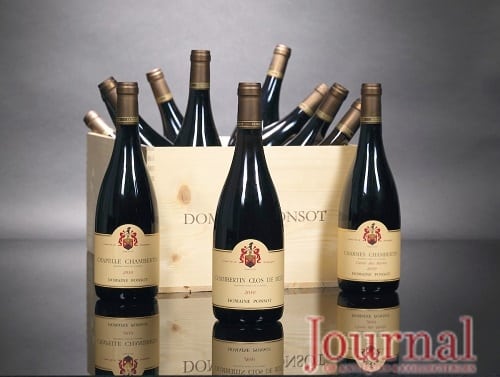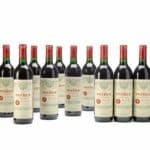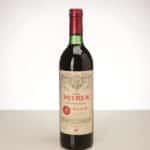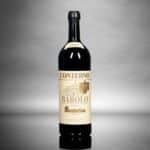Wine collecting has gotten much younger and more sophisticated – and has gone decidedly global – thanks to the modern digital age.
By Ken Hall
One needn’t look any further than the nearest laptop, PC or tablet to figure out the main driver behind fine and vintage wine’s seeming meteoric rise as a hot category of collectible. The digital revolution – and, more to the point, the internet and information age – has catapulted wine collecting from a pastime once reserved for rich male snobs to persons of every conceivable stripe. And it’s worldwide.
Starting in the early-to-mid 1990s, websites sprang up dedicated to fine wines, rare wines and the auction houses that sold them. Then, bidding platforms came into vogue – now-established entities such as LiveAuctioneers.com, Invaluable.com (formerly Artfact.com), iCollector and others made finding collectible wines at auction easier and more accessible. Researching wines also got simpler.
All these things have produced a seismic shift in the field, making wine collecting as we knew it from 20 years ago unrecognizable today. “For the most part, the old stereotype of the wine snob is a thing of the past,” said Jeff Zacharia, president of Zachys Wine Auctions in New York. “What we’ve seen is a democratization of the wine collecting world – more young collectors, more international collectors.”
“Back then, it was an older, male-dominated category, mostly affluent people in larger Western cities,” added John Kapon, CEO of Acker Merrall & Condit in New York. “Now, due to many influences and advancements worldwide, wine collecting has spread to almost every continent. Collectors today, on average, are much younger than 20-30 years ago. Asia and South America especially have emerged.”
The auction houses contacted for this story basically agreed that their base of bidders has become much broader – younger, less skewed toward academia and more female. Marc Smoler, marketing manager of Hart Davis Hart in Chicago, said there really is no wine collector stereotype today. “They come from a myriad of backgrounds with one thing in common: their passion for wine.”
Computers have been the driving force behind the changes. “The digital age has surely contributed to the rise in wine collecting,” Zacharia said. “Information is more accessible to wine drinkers, so more and more people are being attracted to the fine wine world. Also, wine apps like Delectable, and social media like Instagram, have made the social media aspect of fine wine collecting very common as well.”
It’s fairly evident that the fine wine market today more closely mimics a commodities market than a collectibles market. Net results are clearly higher now as compared to, say, 20 or 30 or even 100 years ago, even when taking inflation into account. But the ebb and flow of results is more akin to financial markets, and the effect of internet bidding is embedded into the system of bidding in general.
Kapon said a lot has to do with simple economics. “The internet may provide great information, but that’s less important than the fundamental impact on prices from increasing global incomes and the finite amount of the world’s greatest wines produced. More people with more money, plus the same annual supply more or less, all equals
rising prices. The macro basis for that is supply and demand.”
But how much impact has the internet had on the skyrocketing prices of wine at auction? A lot, according to Heritage Auctions New York Director of Fine Wines Ian Dorin. “It was a total game-changer. Prices went through the roof, and as a result collecting wine has become incredibly popular. It’s so easy, with computers, to be an informed and even sophisticated, collector.” Indeed, the internet rapidly facilitates the dissemination of information on a global scale.
Kapon said the web has made collectors less dependent on traditional wine critics to determine what they want to buy and collect. “That, in turn, has made wine collecting more fun and more ‘democratic’ in terms of who has access to what information, plus it makes it easier and faster to buy the wines that people love and collect. These factors have led to an increased demand, and more knowledge, of wine.”
Hart Davis Hart has been ahead of the curve for some time regarding the internet age. The firm’s retail business has always been online – no brick and mortar storefront at all – which allows customers to buy wine from HDH 24 hours a day. Recently, the firm developed a bidding platform that allows bidders to place absentee and live bids from their smart phones, tablets or computers. It’s a trend that’s spreading.
Hart Davis Hart hosts seven live auctions a year. “While the auction room is constantly bustling, we also have hundreds of people participating online,” Smoler said. “The internet is useful for so many things: buying and selling wine, getting scores, reviews, producer profiles and general wine education materials, as well as cellar management software and market information.”
Zachys holds online wine sales once a month. In the process it’s attracting a whole new demographic of buyer. “Smaller lot quantities and unique mixed lots are the perfect way for new buyers to expand their palate and for well-seasoned collectors to add unique finds to their collections,” he said. “The appetite for perfectly-aged bottles is huge. Our online sales are a big hit – hundreds of lots, hundreds of buyers.”
One firm reported 70 percent of its wine lots were presented in online-only sales during 2015. Smoler said the sell-through rates at Hart Davis Hart can vary greatly from sale to sale. “Often times our room bidders also submit absentee bids in advance of a sale on the digital platform, while other bidders will join the fray in the auction room for a few hours and continue bidding on their phones after they leave.”
Smoler said Asia continues to be Hart Davis Hart’s leading international market, one that drives a large part of its business. “Private collectors and trade buyers in China, Japan, South Korea and Taiwan are influential segments of our clientele. Also, our business has expanded dramatically in Latin America in the last three years and Brazilian collectors continue to express a strong desire for fine and rare wines.”
Wine collecting does have international appeal, though it tends to gravitate toward the more affluent societies. Of course, wine appreciation knows no borders. There will be collectors in virtually every corner of the globe. Religious beliefs and local laws are the only real barriers to wine appreciation. Zacharia said Zachys’ buying base “expands considerably worldwide with each auction.”
Of course, with all this success, the problem of fakes and forgeries has permeated the wine collecting hobby, as it has with coins, autographs, baseball cards and many other popular collecting categories. “Books have been written about it, and one person is spending 10 years in jail for it,” Dorin said of the problem as it pertains to wine. “The positive from this is that there is a major focus on eradicating it.”
Identifying the hottest trends in wine collecting is always fun speculation. “Bordeaux has always been the core of Hart Davis Hart’s business,” Smoler said. “It’s nearly 50 percent of the wine we sell. But in recent years Burgundy has become increasingly popular.” Heritage’s Dorin said that Burgundy “is still king,” with Bordeaux keeping a high ranking in the market, adding, “Champagne has really taken off.”
Zacharia said Bordeaux and Grand Cru Burgundy are at the top of Zachys’ list, adding, “In 2015, we sold over $7.5 million of DRC, $3.3 million of Lafite, $3 million each of Petrus and Mouton, and $2 million of Latour.” Kapon said there were eleven so-called “Million Dollar Brands” in 2015 – wines with total US sales of $1 million or higher. “Eleven out of eleven came from Bordeaux and Burgundy.”
Smoler said the “blue chips” of wine collecting are still Bordeaux and Burgundy, with Napa in third place. “More people are collecting California wines now that they’re comfortable with the labeling and terms,” he said. “From there, the natural flow is toward Bordeaux and the “Super Tuscans” of Italy, with a side-trip to Piedmont, Rhone, Rioja and, ultimately, Burgundy, with its purity of expression.”
















Related posts: